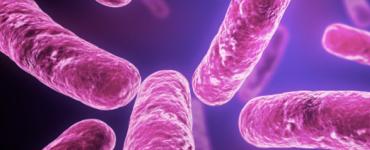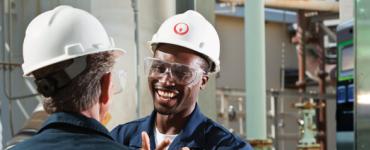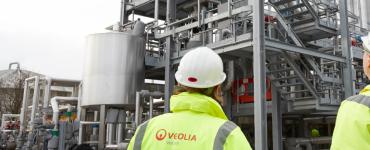- Home
- Latest News
- Distilling Experience

Distilling Experience
Veolia Water Technologies Industrial Sales Manager, Kalpesh Shah, explains how evaporation can help smaller cosmetics facilities to save money on wastewater disposal.
Energy Managers are starting to realise that wastewater from cosmetic production is a potential source of money instead of an unwelcome expense. Evaporation for smaller cosmetics manufacturing facilities that currently dispose of liquid waste offsite will reduce wastewater disposal costs and offer opportunities for recovering raw materials (such as disinfectants, proteins and glycols) as well as recycling water. The article will explain how evaporation works and demonstrate a customer that is using the technology.
How Does It Work?
Evaporation is a very old technology – think extracting salt from sea water – and this concept has been applied in many industries but, in the context of wastewater treatment it has all too often been dismissed as uneconomic. However, things are changing. As alternative disposal routes such as sewer discharge and landfill become more expensive, evaporation is looking more and more attractive. Offsite disposal of wastes containing Active Pharmaceutical Ingredients (APIs) and similar ingredients, often involves incineration or complex chemical treatment: evaporation is a sustainable and environmentally friendly alternative that can reduce the waste volume by up to 90% giving a significant cost saving.
Cosmetics and pharmaceutical manufacturing facilities that currently dispose of liquid wastes offsite can use evaporation to minimise operating costs and recover raw materials including APIs, disinfectants, proteins and glycols, as well as recycling water. How? Well, evaporators work by converting water into vapour, which needs heat to overcome the latent heat of evaporation. This water vapour can then be condensed by cooling to remove the latent heat, producing distilled water for re-use. What is left behind in the evaporator is a concentrated liquid, around only 10% of the original volume which substantially reduces off-site disposal costs.
For this process to work the water has to be at its boiling point and, at atmospheric pressure, this is 100°C, a temperature which can break down many pharmaceutical and cosmetic ingredients. The latest generation of heat pump evaporators operate under vacuum, which means that water boils in the range of 30-40°C. The resulting low temperature evaporation means that it is possible to recover even heat sensitive raw materials from wastes.
Heat pump evaporators use a compressor driven refrigerant circuit to extract the latent heat from the water vapour, which condenses it, and then transfers it to the liquid to evaporate it. This is a highly efficient way of recovering the latent heat and means that there is very little additional heat required for the process. Any additional heat that is required can be provided by an internal electric heater or an external hot water supply. The result is a process that uses, typically, 0.15 kWh per litre of distillate.
Forced Circulation or Scraped Surface?
There are two principal technological options for evaporation: forced circulation and scraped surface. In forced circulation units, the liquid is pumped through a heat exchanger to increase the temperature to about 40°C but, because it is under pumped pressure, it does not boil. The hot liquid then enters the evaporator body, which is under vacuum, where the liquid “flashes” to form vapour leaving behind a concentrated liquid stream. The recirculation velocity maintains turbulent conditions in the heat exchanger tubes to keep the heat transfer surfaces free from deposits which could adversely affect heat transfer efficiency. This type of evaporation means that the liquid and vapour phases are easily separated under gravity, producing the highest distillate quality.
Forced circulation evaporation is about distillate quality, but scraped surface technology is about minimising the volume of concentrate for disposal. It can even handle high viscosity or foaming wastes. Scraped surface is like reducing a sauce in cookery – if you don’t keep stirring it, it is going to burn. Heat is transferred rapidly by conduction from the cooker through the bottom of the saucepan to the liquid. The heat is then transferred from the hot saucepan into the liquid. This hot liquid then moves away from the heating surface by convection into the bulk of the liquid. As the liquid viscosity increases, the rate of convection is reduced, so more heat is going into the liquid than can be removed; with the result that the viscous liquid at the bottom of the saucepan overheats and burns. Stirring removes the liquid from the hot saucepan doing the job of convection currents. In a scraped surface evaporator the internal heat transfer surface is continuously scraped by a rotating blade that prevents viscous liquids clinging to the surface and overheating.
A Case in Point
Looking at a case study will help to explain the difference. A multinational company with more than 250 manufacturing facilities worldwide, with their main facility in Italy, manufacture hair care products operating 24 hours a day for six days a week. The plant produces 36TPD (Tonnes Per Day) of wastewater with a Chemical Oxygen Demand (COD) in excess of 30,000mg/l. This was originally treated by a membrane bioreactor (MBR) producing a high quality treated effluent fed directly to a reverse osmosis plant for recovery. The MBR also produced about 0.5tpd of excess biological sludge. The company’s global sustainability targets set goals for water and raw materials reduction, which led the facility to search for an effective solution that would allow them to reduce both water consumption and MBR sludge production. Initially they installed a small heat pump evaporator to concentrate high density wastewater for off-site disposal. This was so successful that they decided to see what other evaporation technology could be implemented.
After a review of the site operations and wastewater characterisation, Veolia’s engineers developed a scheme using two stages of evaporation. The first stage uses a TC30000 FF MVR evaporator to treat 30TPD of dilute wastewater producing 27TPD of distillate and 3TPD of concentrate, which is mixed with 6TPD of concentrated process waste and sent to a RW 12000 FF scraped surface evaporator, which is fed with hot and cold water from the on-site Combined Heat and Power (CHP) plant. Subsequently this produces a further 7.5TPD of distillate and reduces the concentrate to only 1.5TPD, which is taken off-site for incineration. The plant performance is summarised in Table 1.
TABLE 1 EVAPORATION PLANT PERFORMANCE
Both evaporators are constructed in SAF 2507 super-duplex (austenitic-ferritic) stainless steel and each has a footprint of 14.5m2. The condenser cooling water and hot water for heating the scraped surface evaporator are supplied from the on-site CHP plant.
The combined 34.5tpd of distillate is further treated in the membrane bioreactor (MBR) but sludge production has been reduced from 500kg/day to less than 20kg/day with an improvement in treated wastewater quality resulting from a lower COD loading on the plant.
The new plant slightly increased energy consumption but this was more than compensated for by the recovery of some 96% of the wastewater for reuse and a large reduction in off-site disposal costs. The overall result is a reduction in total treatment costs of 75% giving a payback on the investment in less than a year.
Conclusion
Evaporation can reduce off-site disposal costs and recover not only good quality distilled water but also valuable ingredients. With low capital and operating costs, evaporative technologies, such as Veolia Water Technologies UK’s range of EVALED™ PC heat pump evaporators, the result of three decades of evaporation experience, are now well within the reach of even small cosmetics facilities.














